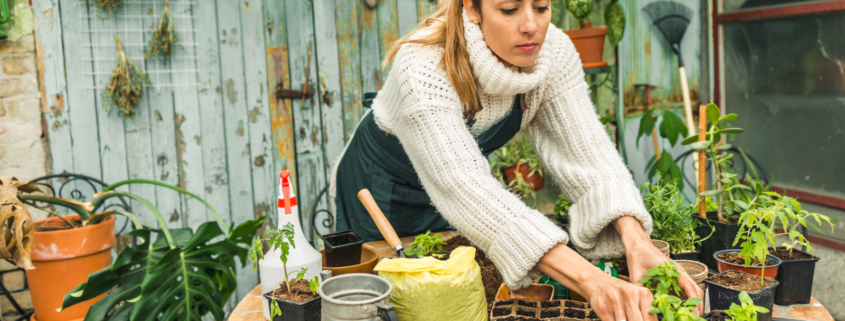Design a Garden in Spring You Can Be Proud of in Summer
Are you dreaming of a beautiful garden or want to do better than last growing season? Keep this article as a guide for landscaping prep in March, April and May (depending on your climate). As a result, enjoy your blooming trees, shrubs, flowers, and vegetables!
March, April and May Gardening Tasks for a Successful Growing Season
Let’s start with a motivational quote from Midwest Living: “What you do in March sets the stage for a successful garden and yard throughout the spring and summer.” So, here are steps to take in these months toward a beautiful landscape.
- If you’re new to gardening or want a fresh transformation and don’t know where to start, consult a landscaping designer to develop a signature style. On that note, consider playing with color in April! Perhaps you’ll want to plant pansies and violas.
- Make a chart of what seeds to sow and when.
- Order seeds and mulch at your earliest convenience. Buy in bulk to save money and avoid dealing with a lot of plastic. Study up on these seeds while you can.
- About six to eight weeks before the last frost date, put your cool-season flowers in pots.
- Start warm-season plant seeds indoors.
- Check your fences to ensure critters can’t get in and make repairs if needed.
- Wait to work on your soil and lawn until the muck, ice, and frost are gone. It’s better to start late than turn your soil into concrete! Furthermore, you will support beneficial insects by waiting until there have been several days of temperatures above 50 degrees Fahrenheit.
- Check to see if your irrigation systems are intact, and if not, repair them.
- Make space in your compost heap for the incoming debris.
- Remove weeds before they bloom and reproduce. Rake old leaves, but don’t disturb annual poppies while cleaning the yard.
- “Spot clean” critical areas before you sow the earliest crops. You may find it most straightforward to start cleanup near the house and the most-traveled front walkways.
- Prune grapes and cane berries.
- As soon as you see signs of new growth, pull away Winter mulch, perennial plants, and ornamental grasses.
- If an area of your garden was unsuccessful last year, send samples for a soil test.
- Apply the first fertilizer of the season and aerate your lawn if necessary.
- Gently remove matted leaves to uncover early Spring bulbs.
- Add mulch and fertilizer to roses, areas around trees, and blooming shrubs. To prevent disease, keep the mulch several inches away from tree trunks.
- Paint or repaint trees under fifteen to protect them from the sun. Use a 50/50 mix of white latex paint and water.
- Once temperatures exceed 40 degrees, spray trees, roses, and shrubs with dormant oil. The oil prevents scale insects, spider mites, and other pests.
- Shape your roses while cutting weak and crossing branches.
- Prune Spring blooming shrubs and non-blossoming limbs on fruit trees to prevent disease.
- If you prefer organic fertilizers on vegetable plants, dig organic matter into the beds before planting the vegetables.
- Plant your summer bulbs, bare-root trees, container-grown trees, shrubs, annuals, vegetables, and roses.
- Put out bait for snails and slugs. If you have children, make sure the products are safe.
- Empty nests from your nest boxes and order more birdhouses.
- Toss your weak seedlings, and if time allows, try again—otherwise, transplant nurseries.
- Remove floating deicers from your water garden and start your pumps and filters.
You don’t need to complete these jobs in this exact order.
Gardeners in Canada and the U.S., MAKE A FREE REQUEST with GetAssist for a local landscaper or gardener.
Welcome to Spring!







Leave a Reply
Want to join the discussion?Feel free to contribute!